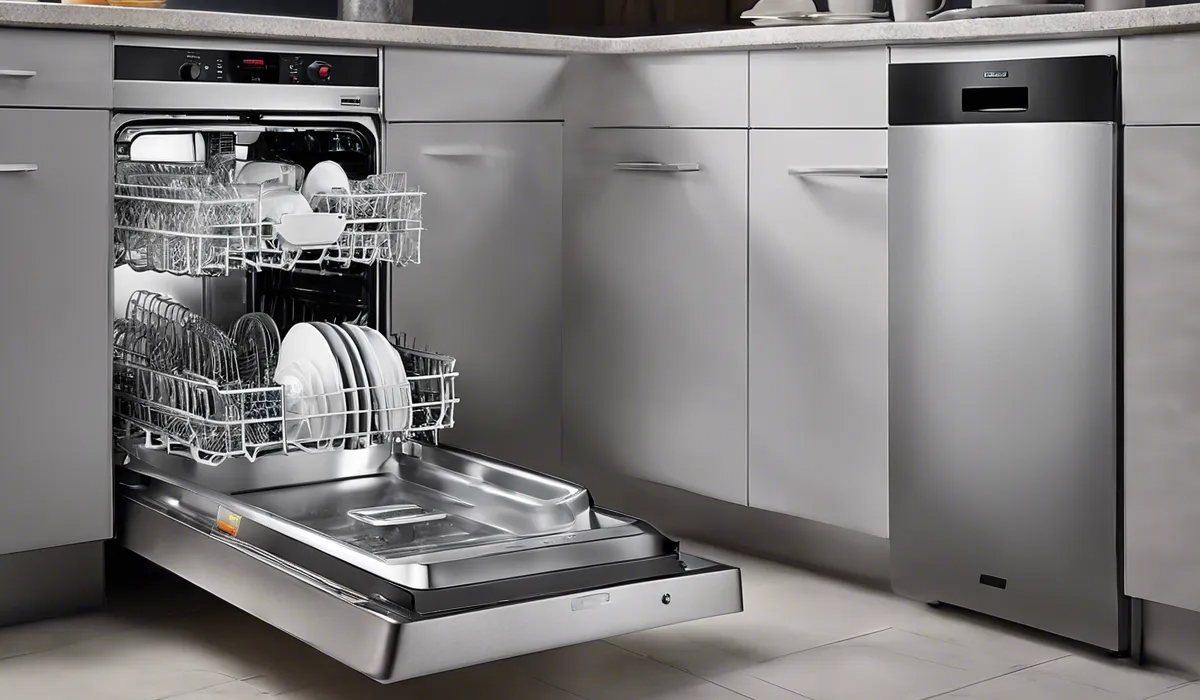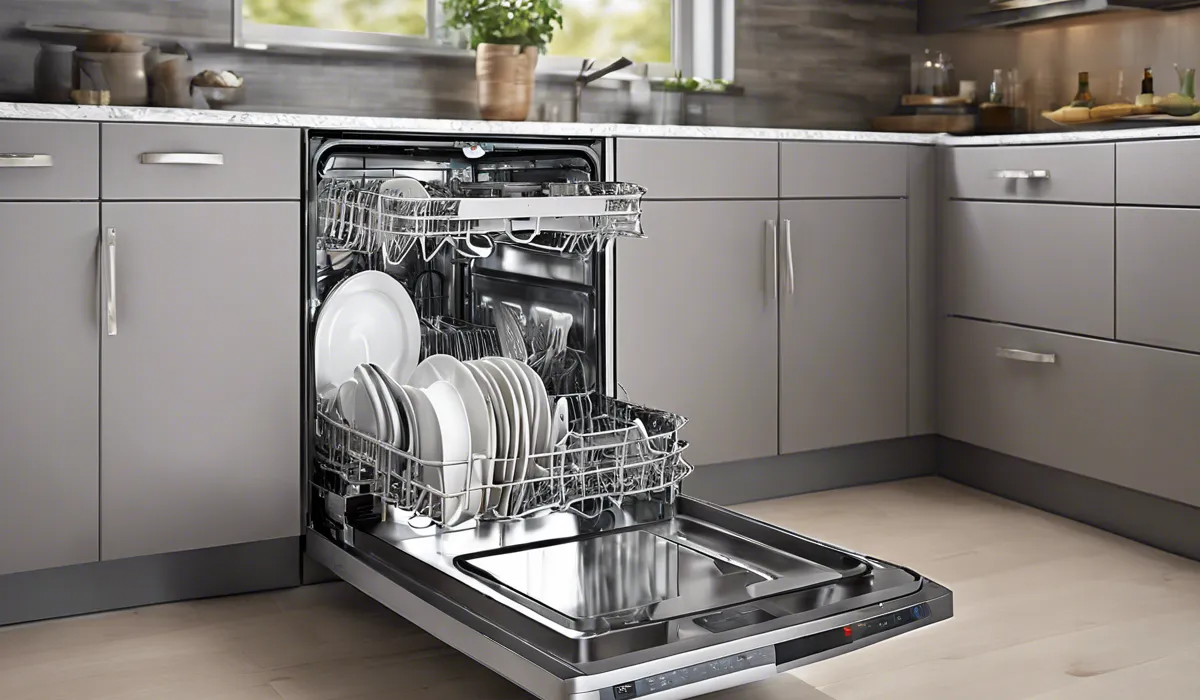How to Wire a Dishwasher: Easy Step-by-Step Guide
To wire a dishwasher, first, turn off the power at the circuit breaker. Connect the hot wire (usually black) to the dishwasher’s black wire, neutral wire (white) to white, and ground wire (bare copper) to the dishwasher’s green grounding screw. Secure all wire connections with wire nuts and electrical tape. Finally, test the dishwasher for proper operation.
Preparing for Installation

Turn Off the Power Supply
Before you begin any installation work, safety must come first. Ensure that the power supply to the area where you will be installing the dishwasher is turned off. This is a crucial step to prevent any electrical hazards.
Go to your home’s circuit breaker or fuse box and find the switch that controls the power to the kitchen or the specific outlet for the dishwasher. Flip it to the ‘off’ position to cut the power supply.
Gather Necessary Tools and Materials
You will need a few essential tools and materials to wire your dishwasher correctly.
Gather a screwdriver, wire stripper, wire nuts, electrical tape, a voltage tester, and a flashlight.
Having everything on hand before you start will make the process smoother and faster.
Measure and Ensure Space for the Dishwasher
Measure the space where your dishwasher will go to make sure it fits. You’ll want to check the width, depth, and height. Leave a little extra room for ventilation and hose connections.
Knowing the size you have to work with will help you position the dishwasher correctly and avoid any issues with the installation.
Check and Understand Local Electrical Codes
Before starting the installation, it’s crucial to check and understand the local electrical codes. These codes are in place for safety and to ensure that your installation is up to standard.
You may need to consult with a professional or do some research online. Some regions may require a dedicated circuit for a dishwasher, so it’s essential to know these details ahead of time.
Wiring the Dishwasher

Access the Dishwasher’s Electrical Junction Box
Most dishwashers have an electrical junction box located at the bottom front, behind the toe kick. Remove the cover of the junction box to expose the wires. This is where you will connect the dishwasher’s wiring to your home’s electrical system.
Strip the Electrical Wires
Using a wire stripper, carefully strip the insulation from the ends of the wires coming from your power supply.
Usually, you’ll need to strip about half an inch of insulation. Be careful not to nick the wires, as this could cause a poor connection and potential hazards.
Connect the Ground Wire
The ground wire is typically a bare copper wire or a wire with green insulation. Connect this wire to the green grounding screw in the dishwasher’s junction box.
This step is vital for safety, as it helps prevent electrical shock in case of a short circuit.
Attach the White (Neutral) and Black (Hot) Wires
Next, take the white wire from your power supply, which is the neutral wire, and connect it to the dishwasher’s white wire.
Similarly, connect the black (hot) wire from your supply to the dishwasher’s black wire. Make sure you match the wire colors correctly to ensure proper electrical function.
Secure the Wire Connections with Wire Nuts
Once you have connected the wires, use wire nuts to secure them. Twist the wire nuts onto the connected wires clockwise until they are tight.
This will help prevent the wires from coming loose over time, which could lead to electrical problems or a potential fire hazard.
Confirm All Connections Are Tight and Secure
After securing the wire nuts, give each wire a gentle pull to ensure they are not loose. You want to be certain that all connections are tight and secure before proceeding. This step is crucial to avoid any electrical issues once the dishwasher is in use.
Finalizing the Installation

Tuck Wires Neatly into the Junction Box
With all the connections made, carefully tuck the wires into the dishwasher’s junction box. Be sure not to pinch or crimp the wires, as this could damage them and potentially create a hazard.
Attach the Junction Box Cover
Once the wires are neatly tucked away, replace the cover on the junction box. Secure it with the screws you removed earlier.
This will protect the wire connections from any physical damage and help contain any electrical sparks should a short circuit occur.
Slide the Dishwasher into Place
Carefully slide the dishwasher into its designated space. Make sure it is level and properly aligned with the cabinetry. Adjust the feet if necessary to ensure the dishwasher is stable and does not rock.
Restore the Power Supply
Once the dishwasher is in place, go back to your circuit breaker or fuse box and restore the power supply. This step is preparing for the final test to ensure the dishwasher operates correctly.
Test the Dishwasher for Proper Operation
Now it’s time to test your newly installed dishwasher. Turn it on and run it through a short cycle to check for proper operation.
Look for any error codes or signs that it may not be functioning correctly. If everything looks good, congratulations! You have successfully wired your dishwasher.
FAQs About Wiring a Dishwasher
What is the first step in wiring a dishwasher?
The first step in wiring a dishwasher is to turn off the power at the circuit breaker to ensure safety during installation.
How do I connect the dishwasher wires to the power source?
Connect the hot wire (usually black) to the dishwasher’s black wire, the neutral wire (white) to the dishwasher’s white wire, and the ground wire (bare copper) to the dishwasher’s green grounding screw.
What should I use to secure the wire connections?
Secure all wire connections with wire nuts and wrap them with electrical tape to ensure a safe and stable connection.
Is it necessary to ground a dishwasher?
Yes, it is necessary to ground a dishwasher by connecting the ground wire to the dishwasher’s green grounding screw to prevent electrical shocks.
How can I test if the dishwasher is wired properly?
After wiring the dishwasher and restoring power at the circuit breaker, test the dishwasher for proper operation by running a cycle to ensure it functions correctly.
Final Thoughts
Wiring a dishwasher requires safety first by turning off the power. Ensuring proper connection of the wires—black to black, white to white, and bare copper to the green grounding screw—is essential.
All connections should be secured with wire nuts and taped. After installation, a careful test should confirm the dishwasher’s correct functioning.





